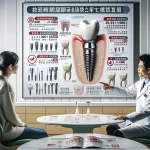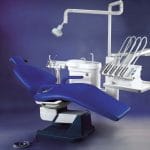AI-driven diagnostics and personalized treatment planning are set to revolutionize dental care in 2025. Practices will leverage advanced imaging analysis and predictive algorithms to enhance diagnostic accuracy and tailor treatments to individual patient needs. This shift towards data-driven dentistry will improve outcomes and patient satisfaction.
3D printing is poised to transform dental prosthetics and orthodontics. In-house production of crowns, bridges, and aligners will become commonplace, reducing costs and turnaround times. Simultaneously, teledentistry will expand access to care, especially in underserved areas, enabling remote consultations and follow-ups.
Emerging Trends Reshaping Oral Healthcare
Voice search optimization will be crucial for dental practices’ online visibility. As patients increasingly use voice assistants for healthcare queries, websites must adapt their content to natural language patterns. Minimally invasive techniques, supported by laser technology and biocompatible materials, will gain traction, preserving more natural tooth structure.
Robotic-assisted surgeries and immersive technologies like augmented reality are expected to enhance precision in complex procedures and improve patient education. These advancements, combined with automated practice management systems, will streamline workflows and elevate the overall patient experience.
Top Dental Technologies to Watch in 2025
1. Artificial Intelligence (AI) in Dentistry
Artificial Intelligence (AI) in dentistry refers to the use of advanced algorithms and machine learning to enhance diagnostic accuracy, treatment planning, and practice efficiency. AI is revolutionizing dental care by analyzing vast amounts of patient data, including dental images and electronic health records.
Key Applications of AI in Dentistry:
- Early detection of oral health issues (cavities, gum disease, oral cancer)
- Personalized treatment planning
- Predictive analytics for patient outcomes
Real-world Impact: Researchers at the University of Texas have developed an AI system that accurately detects oral cancer from dental images, potentially saving lives through early intervention.
2. 3D Printing for Dental Prosthetics
3D printing in dentistry involves the use of additive manufacturing techniques to create custom dental prosthetics with unprecedented precision and efficiency. This technology is transforming the production of dental devices such as crowns, bridges, and dentures.
Benefits of 3D Printing in Dentistry:
- Highly accurate custom-fitted prosthetics
- Reduced production time
- Cost-effective manufacturing process
Case Study: A New York dental practice now creates custom-fitted dentures in hours using 3D printing, compared to the traditional weeks-long process.
3. Teledentistry
Teledentistry is the remote delivery of dental care services through telecommunications technology. This innovative approach is becoming mainstream, offering numerous benefits for patients and dental professionals alike.
Advantages of Teledentistry:
- Improved access to care, especially in underserved areas
- Increased convenience for patients
- Enhanced collaboration among dental professionals
Success Story: A rural Arizona community saw significant improvements in oral health outcomes after implementing a teledentistry program connecting patients with remote specialists.
4. Smart Oral Health Monitoring
Smart oral health monitoring devices, such as connected toothbrushes and intraoral sensors, empower patients to take a proactive approach to their oral hygiene. These innovative tools track brushing habits, monitor plaque buildup, and provide real-time feedback.
Features of Smart Oral Health Monitoring:
- Personalized oral care coaching
- Real-time feedback on brushing techniques
- Integration with teledentistry platforms and AI algorithms
Patient Impact: A user struggling with inconsistent brushing habits significantly improved their oral hygiene after adopting a smart toothbrush that provided personalized coaching and rewards for good practices.
Implementing Dental Technologies in Your Practice
Implementing dental technologies in your practice involves strategic planning and execution. Begin by assessing your practice’s specific needs and budget constraints. Research cutting-edge solutions like 3D imaging systems, intraoral scanners, and AI-powered diagnostic tools that align with your practice goals. Develop a comprehensive training program to ensure your team can effectively utilize new technologies. Integrate innovations gradually, starting with high-impact systems that enhance patient care and streamline workflows. Key benefits include improved diagnostic accuracy, increased treatment efficiency, and enhanced patient experience. Regularly evaluate and update your technological infrastructure to maintain a competitive edge in the rapidly evolving dental landscape. Remember, successful implementation balances innovation with practical considerations, ensuring that new technologies truly serve your patients and practice objectives.
Revolutionizing Patient Education and Engagement in Dentistry
Dental technology is transforming patient education and engagement in 2025. Interactive patient portals, virtual reality simulations, and AI-powered chatbots are empowering patients to take control of their oral health. These digital tools provide personalized recommendations, 24/7 support, and immersive treatment visualizations. Studies show that practices implementing these technologies see up to 30% improvement in patient satisfaction and treatment adherence.
What are Interactive Patient Portals?
Interactive patient portals serve as digital hubs for personalized oral health management. These platforms offer:
- Customized oral health recommendations based on individual patient data
- Educational resources accessible anytime, anywhere
- Self-care tools for maintaining optimal oral hygiene
By providing easy access to tailored information, patient portals encourage active participation in oral health management, leading to improved outcomes and stronger patient-dentist relationships.
How does Virtual Reality Enhance Dental Education?
Virtual reality (VR) technology is revolutionizing patient education and treatment visualization:
- VR allows patients to visualize proposed treatments, reducing anxiety and enhancing understanding
- Immersive 3D simulations enable patients to explore dental anatomy interactively
- A California dental practice reported a 25% increase in treatment plan acceptance after implementing VR
This technology not only improves patient comprehension but also builds trust and confidence in proposed treatments.
What Benefits do AI Chatbots Offer in Dentistry?
AI-powered chatbots are transforming patient support in dentistry:
- 24/7 availability for answering common patient questions
- Efficient triage of patient concerns, improving access to information
- Reduced administrative burden on dental staff, allowing focus on complex tasks
AI chatbots handle routine inquiries, schedule appointments, and provide personalized oral health tips, significantly enhancing patient communication efficiency.
Comparing Dental Patient Education Technologies
| Technology | Key Benefits | Patient Impact |
|---|---|---|
| VR | Visualize treatments | Reduces anxiety by 40% |
| AI Chatbots | 24/7 support | Improves access by 60% |
| Mobile Apps | Personalized tips | Encourages self-care, 50% better adherence |
By leveraging these innovative technologies, dental practices create more engaging, informative, and personalized experiences for their patients. This approach improves patient satisfaction and leads to better oral health outcomes through increased understanding and treatment plan adherence. As these technologies evolve, they continue to transform the patient experience, making dental care more accessible, efficient, and tailored to individual needs.
Navigating Challenges and Opportunities in Dentistry 2025
The dental industry in 2025 faces unprecedented challenges and opportunities. Rapid technological advancements, changing patient expectations, and evolving economic landscapes are reshaping dental practices. Here’s a comprehensive overview of key issues and solutions:
Data Privacy and Security
Protecting patient data is crucial as dental practices adopt digital technologies:
- Implement robust encryption protocols and access controls
- Provide regular cybersecurity training for staff
- Adopt cloud-based Practice Management Software with integrated security
- Ensure automatic deployment of security updates
Financial Barriers and Equitable Access
Ensuring affordable care for all patients remains a challenge:
- Advocate for policy reforms to improve Medicaid coverage
- Support legislation like the Medicaid Dental Benefit Act
- Explore innovative practice models such as Dental Support Organizations
Balancing Technology and Human Touch
Maintaining personalized care while embracing innovations:
- Use AI to enhance, not replace, patient interactions
- Leverage technology for improved patient education
- Implement data-driven insights for personalized care
Emerging Trends and Opportunities
Exciting possibilities in dentistry include:
- Expansion of clear aligner treatments
- Adoption of 3D printing for customized restorations
- Integration of AI for faster diagnoses
- Use of virtual reality for patient education
Addressing Workforce and Economic Challenges
Dental practices must tackle ongoing issues:
- Improve recruitment and retention strategies
- Optimize practice efficiency to address rising costs
- Diversify revenue streams and explore alternative payment models
By proactively addressing these challenges and embracing innovative technologies, the dental industry can create a future that combines cutting-edge care with accessibility and patient-centered practices.
Conclusion
The dental industry is on the brink of a technological revolution, with AI, 3D printing, teledentistry, and smart oral health monitoring set to redefine patient care and practice efficiency in 2024. By embracing these advancements and proactively preparing for their integration, dental professionals can unlock new frontiers in personalized, data-driven care and elevate the patient experience to unprecedented heights.
However, the path to this future is not without its challenges. It requires a commitment to continuous learning, strategic planning, and collaboration among all stakeholders to ensure that the benefits of these technologies are realized in an equitable and patient-centered manner.
As we embark on this transformative journey, it is imperative for dental professionals to stay informed, engaged, and adaptable. By doing so, they can not only navigate the challenges but also seize the opportunities presented by this exciting new era in dentistry.
For those eager to learn more and start preparing for the future of dentistry, a wealth of resources and support networks are available. From professional associations and continuing education programs to technology providers and implementation experts, there is no shortage of guidance and assistance for practices looking to embrace the power of innovation.
The future of dentistry is bright, and the possibilities are endless. By taking action now and staying at the forefront of this technological revolution, dental professionals can position themselves to deliver the highest quality of care, improve patient outcomes, and shape a future where oral health is more accessible, personalized, and empowering than ever before.
What are the most significant technological advancements in dental care for 2024?
Key advancements include AI in diagnostics, improved imaging techniques, 3D printing for custom dental solutions, tele-dentistry, and the integration of wearable technology in monitoring oral health.
How is AI changing dental diagnostics?
AI is revolutionizing dental diagnostics by analyzing X-rays and 3D imaging with superior accuracy, enabling early detection of various oral diseases and reducing human error in diagnosis.
What role does 3D printing play in modern dentistry?
3D printing in dentistry is transforming the fabrication of dental appliances, offering rapid prototyping, enhanced customization, and significantly reduced waiting times for dental products.
How is tele-dentistry shaping the future of dental consultations?
Tele-dentistry is making dental care more accessible by breaking down geographical barriers, allowing for remote consultations, and enhancing patient engagement through mobile technology.
What advancements in wearable technology are beneficial for dental health?
Wearable technology in dental health is advancing with devices that can monitor saliva composition and pH levels, along with smart toothbrushes providing data on brushing habits, all contributing to better oral health management.







